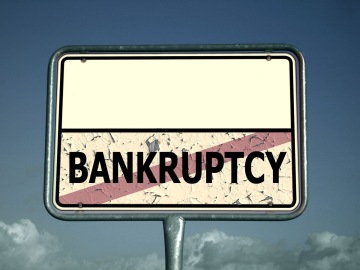
Preventing Insolvency in Slovakia
Slovakia has adopted a new regulation which shall help companies that have run into financial difficulties. Statistics indicate that up to 65 % of the companies which declared bankruptcy, had been having financial problems for a time period of three years prior to declaring bankruptcy. They ignored their non-thriving situation and seemed to believe that their financial problems are only mild and temporary. As of July 17, 2022, companies may no longer irresponsibly ignore such situation.
The whole process of prevention of impending insolvency will be operated electronically and will incorporate two new means:
a Public Preventive Restructuring, and
a Non-Public (Private) Preventive Restructuring.
Public preventive restructuring can be initiated only via debtor’s application in a state of impending insolvency due to impending illiquidity. Impending insolvency means a financial crisis, in which the ratio of equity to liabilities is less than 8 to 100. One of the conditions for submission of the application for approval of public preventive restructuring is the debtors’ registration in the Slovak Register of Public Sector Partners. This forces the debtor to provide information about its ultimate beneficiary owner. Another condition is a public plan concept, which presents the debtor's idea of how to resolve its impending insolvency.
If the application is accepted, the court may appoint an advisor and an administrator, whose main role is surveillance of the debtor. The advisor plays a new and rather significant role in preventive proceedings. The advisor shall examine and suggest the need for specific measures, provide respective opinions, in some cases provide consent to the debtor's actions, etc., all in order to help the debtor to get out of its financial difficulties. As soon as the public preventive restructuring is granted, the debtor shall make its concept plan accessible to its creditors and shall initiate an informative assembly of creditors, who shall discuss the public plan and possible restructuring measures. The public plan should not significantly divert from the original concept and shall be approved by the creditors. The creditors are divided into various groups. If some creditors do not agree with the public plan, the debtor may ask the court to substitute the creditors’ consent. After the consent of the creditors with the public plan is granted, it has to be confirmed by the court. Once confirmed by the court, the public plan is obligatory for the debtor and it may proceed with the fulfilment of the public plan.
The debtors’ main motivation for public preventive restructuring is the possibility of temporary protection, which is granted by the court provided that the creditors agree. It is granted upon request of the debtor and lasts 3 months. Even though it limits the debtors’ dispositive powers with its property, it has various positive effects. The debtor is not obliged to file an application for bankruptcy, bankruptcy may not be declared or restructuring may not be granted. Already opened bankruptcy or restructuring proceedings shall be interrupted, certain time limits for claiming a right or contestability do not run, enforcement proceedings are no longer possible, etc. This gives the debtor time and is a great opportunity to sort out its financial liabilities. On the other hand, the effects of temporary protection have an enormous impact on creditors and recovery of their claims.
Private preventive restructuring only concerns debtors whose creditors are banks. The proceeding is not public and the court interferes only slightly. The only condition for private preventive restructuring is that the debtor may not be in a state of ongoing bankruptcy or restructuring proceedings. The whole process of private preventive restructuring is private, including the private plan. After the private preventive restructuring is announced to the court, the debtor shall submit the private plan for court approval within three months.
The new act is an effective tool that may resolve a debtor's financial issues in a timely manner. The debtor may continue its business activities and may avoid bankruptcy. The new regulation not only helps companies with their liquidity and creditors with their claim recovery, but also sustains the Slovak economy and the employment market.
By JUDr. Valter Pieger and Mgr. Veronika Kvašňovská
Download
Author
News & Publications
The Legal 500 EMEA 2024: Giese & Partner Among Czech Leading Law Firms
According to The Legal 500 Europe, Middle East & Africa 2024 edition, which has just been released, Giese & Partner continues to be one of the leading law firms in the Czech Republic in the areas of real estate projects and banking, finance and capital market law.
Czech Laws Officially Online – Czechia Finally in the 21st Century. Or Is It Really?
After almost eight years, the Act on the Collection of Laws and International Treaties is coming fully into force to take us one step further – towards an official and legally binding electronic database of laws. Was it worth the wait?
Changes to Prepayment of Consumer Loans
As a result of the change of Consumer Loan Act the banks will be entitled to charge higher fees for prepayment of residential consumer loans, however, only up to 1 % from the prepaid principal.




